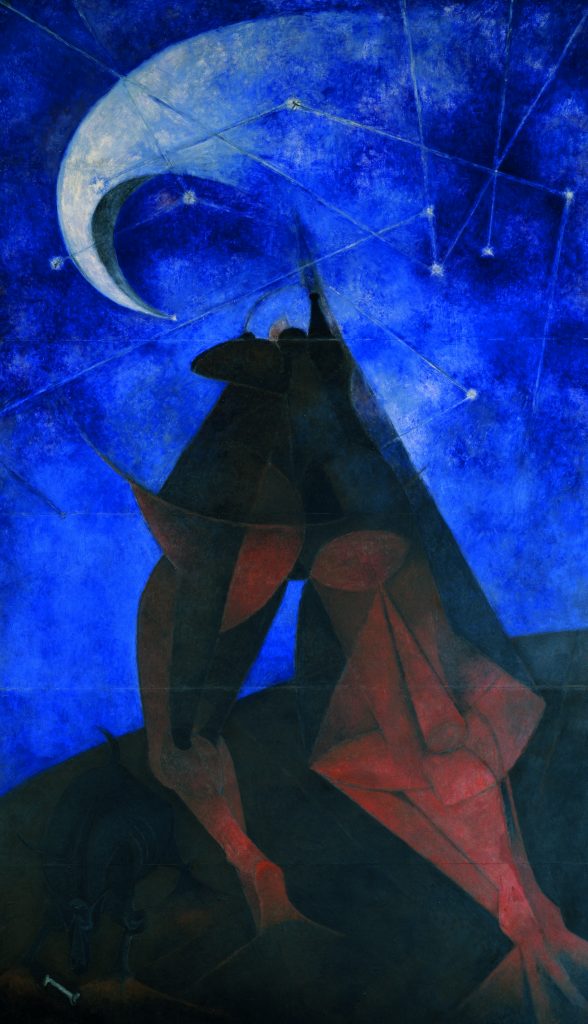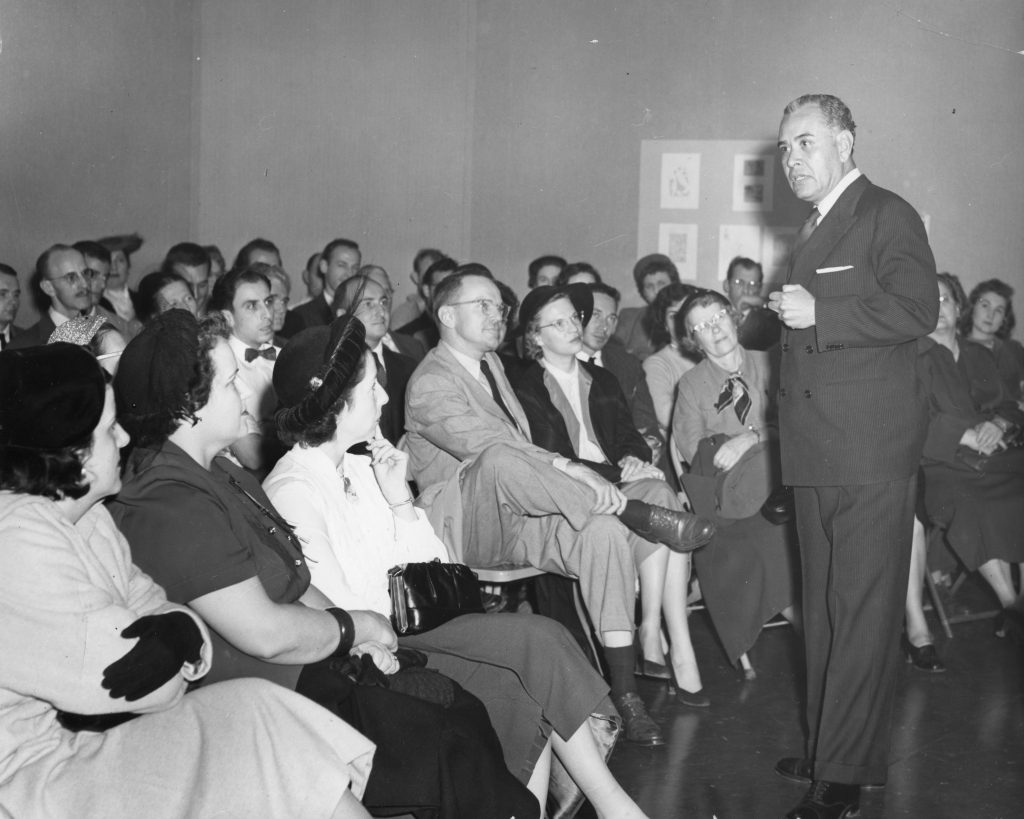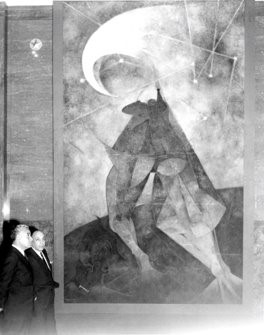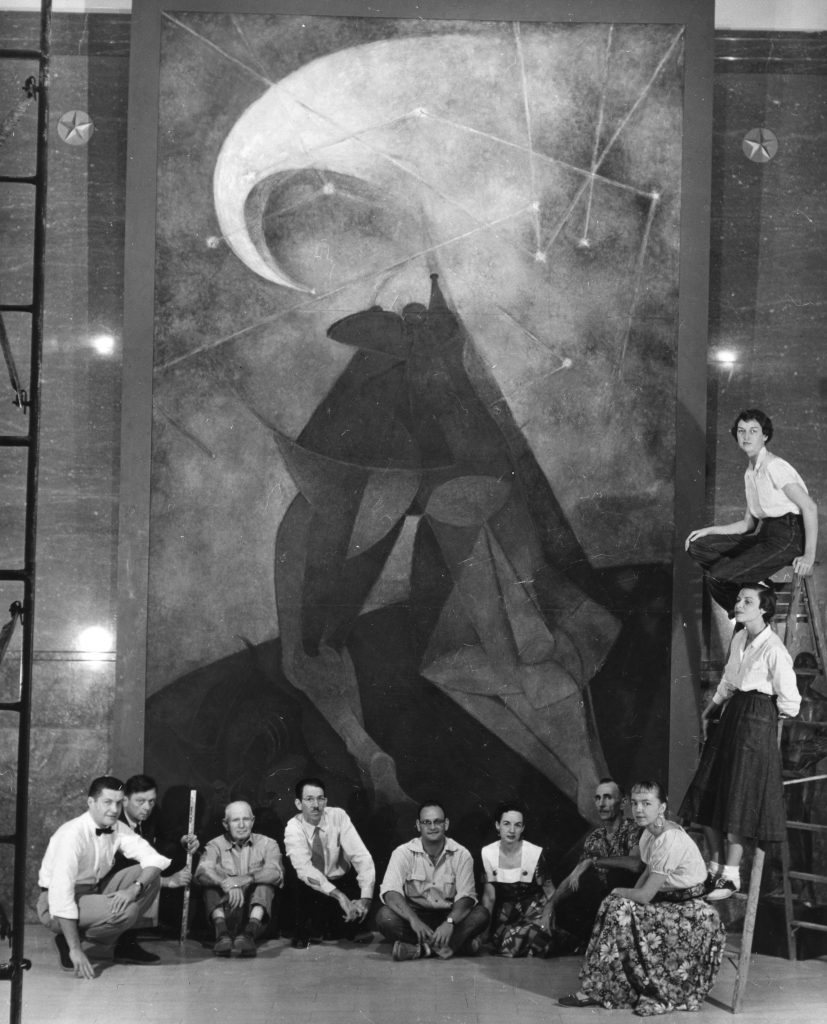“I wish to commend you for accepting the commission to execute this painting which emphasizes the dignity of human nature. It is most appropriate that the people of the United States and Mexico are reaching one another’s cultures by mutual encouragement of the fine arts.”
This quote is from a telegram sent by the governor of Texas to Mexican artist Rufino Tamayo on the installation of his mural painting El Hombre at the Dallas Museum of Fine Art in October 1953. The genesis of the mural, commissioned by the Dallas Museum of Fine of Art, is directly related to the statements embodied in this quote.

Stanley Marcus, a long-time supporter of the Museum and president of the Museum’s Board of Trustees, had been trying to convince the Board that collecting Latin American art was a golden opportunity in advance of what would become mainstream status. Marcus had become close with artist Rufino Tamayo and his wife, Olga, after meeting through friends in Mexico and invited them to visit Dallas. A visit was planned for October 1951, with Marcus hosting the Tamayos prior to four days of lectures and events at the Museum.

They were expected to arrive in Dallas early in the evening from Amarillo, where Tamayo was giving a lecture. Marcus became increasingly concerned as the hours passed beyond their expected arrival time. When Rufino and Olga finally made it to the Marcus home late in the evening, they were clearly shaken and it was obvious something had happened. The Tamayos explained that their car had been hit, the other driver had called them by a racial slur, and the police charged them with the accident even though it wasn’t their fault. Tamayo was so appalled by the treatment they had endured that he didn’t think he wanted to do anything in the United States. Marcus responded that he thought it was a job for all of us to work to change the impressions that some Texans had of people from Mexico.
Marcus would go on to explain to Tamayo that one of his reasons for being interested in Mexican painting was because he thought that it was the key to establishing warm and understanding relations between the US and Mexico. Marcus once said in an Oral History interview in January 2002, “As you get to know more about the art and culture of the other countries, you begin to have respect for them. You have respect for the art, you have respect for the individuals who created it.”
Tamayo admitted that he had not thought of it that way. Marcus used this opportunity to extract a promise to create a large-scale painting, a mural, on a subject of the artist’s own devising. Tamayo even agreed to produce the mural for a fraction of his usual rate to accommodate the Museum’s lack of funds.
While Tamayo agreed to paint a mural for the DMFA in October 1951, he did not complete the work until the summer of 1953. El Hombre was briefly shown at the Salon de la Plastica Mexicana. In a review of the showing for the Mexico City newspaper Excelsior, Margarita Nelken wrote that the painting was a “transcendental work of the contemporary Mexican school.”


The painting arrived in Dallas on September 18, 1953—after a four-week train trip that included a delay due to flooding—and premiered on October 8 during the State Fair of Texas.
Hillary Bober is the Archivist at the DMA.